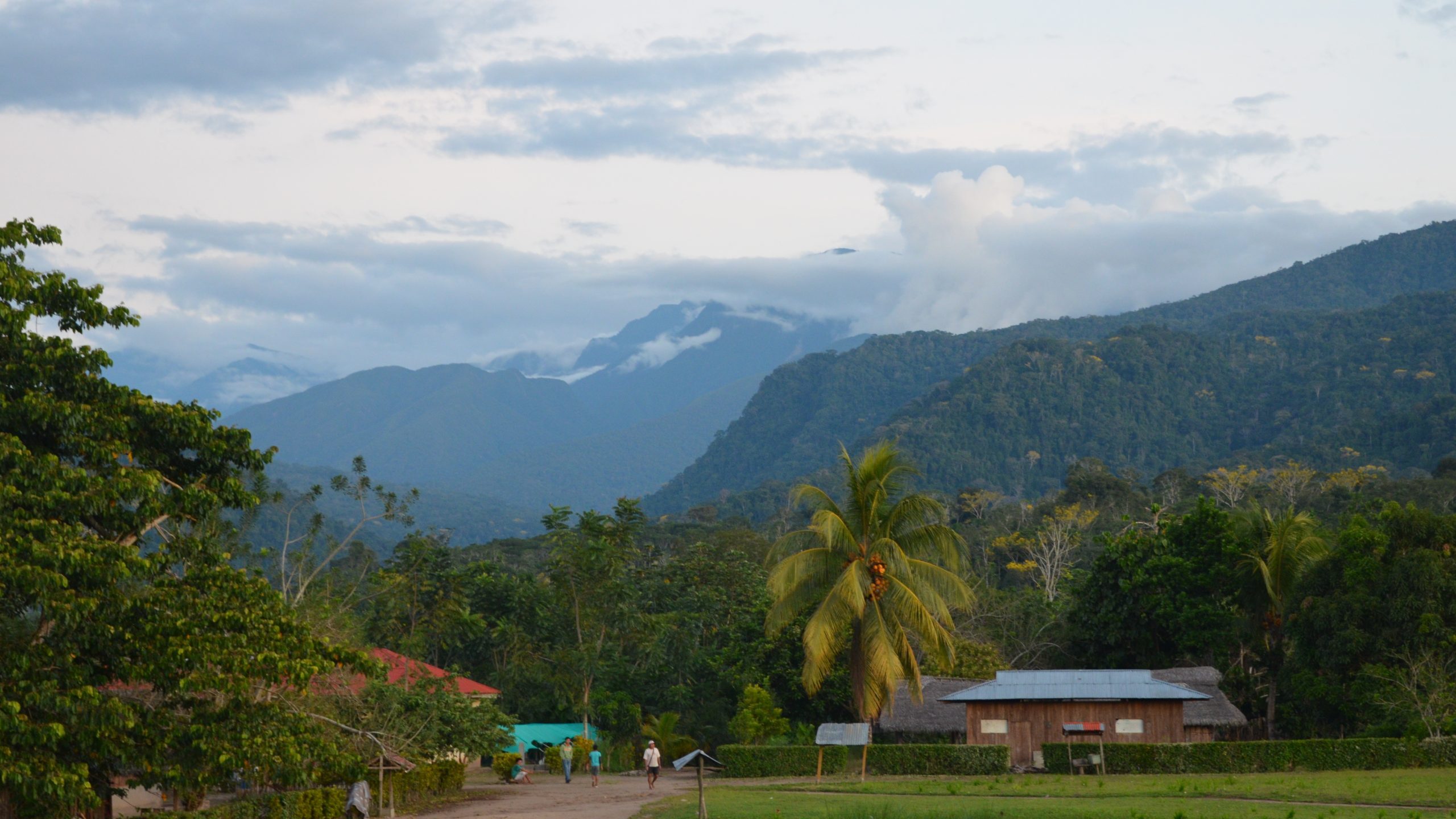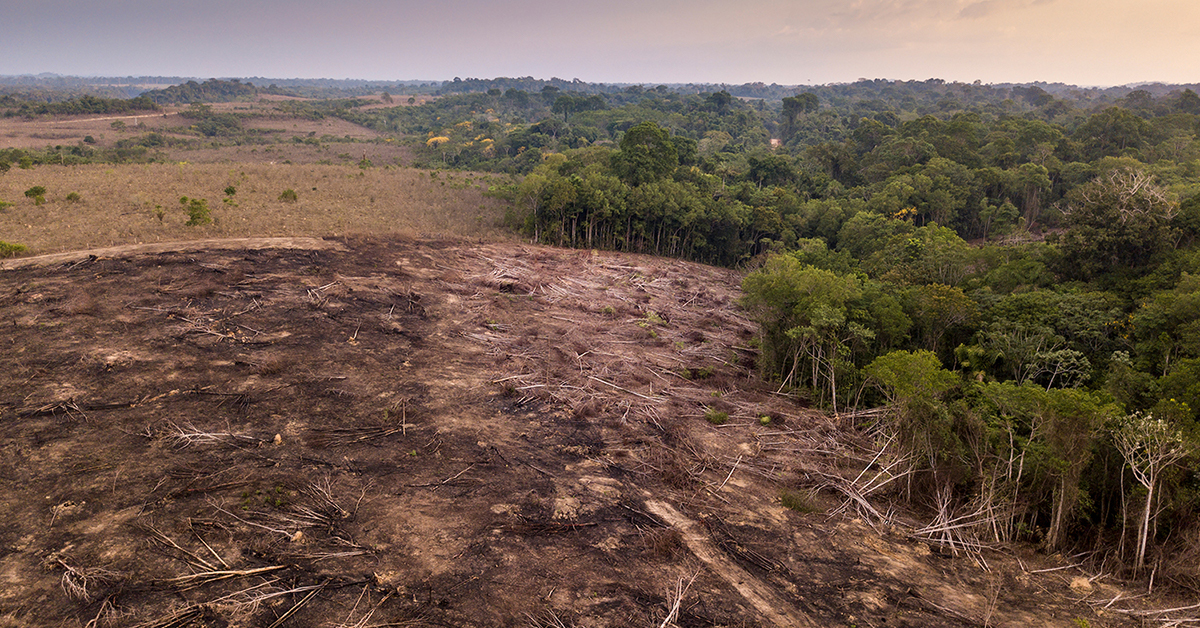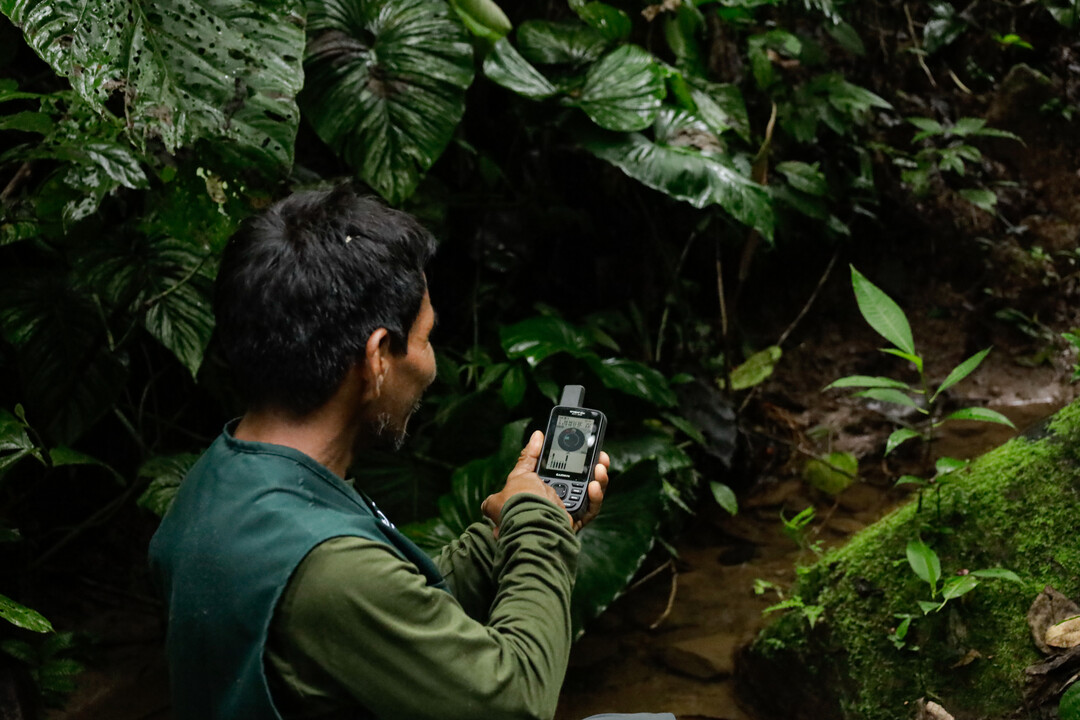
Meet Gilder this UN Indigenous Peoples Day
‘We have internet, solar panels, laptops, tablets, and GPS devices, ’ explains Gilder, president of the forest monitors in his community, deep in the Peruvian Amazon. ‘We value it, we take care of it all, and clean it often, because it’s for the community and our forest.’
This high-tech equipment was provided to the community by Cool Earth, we’ve been working with Gilder’s community since 2022. As well as helping them to build and equip a Rainforest Lab, we also helped train the forest monitors who now lead the project – with Gilder at the helm.

In this part of the world, the connection between people and the forest is both crucial and fragile. The Peruvian rainforest faces many tough challenges, from profit-hungry logging companies and illegal mining activities to large-scale cattle farming. And Gilder has seen the effect of these pressures firsthand.
‘When I was six, my dad and I used to hunt in the forest,’ he says. ‘He used a bow and arrow. We would hide among the trees, and we’d see herds of peccaries running through the forest. This disappeared over time.’
As Gilder grew up, he began to understand more about the threats his community faced and how vulnerable they were to approaches from those who wish to exploit the forest for financial gain.
‘The elders once allowed loggers to enter the community,’ he explains. ‘They sold our trees, but they were often cheated; the community barely received half the real value.’

Fortunately, the logging company was called to account by the government and fined. And recognising this as an opportunity, Gilder and some of the younger people in his community got together and rallied support, both for cutting ties with the logging company and for stepping up themselves to protect the forest.
‘We didn’t just sit and watch. We made the logging company sign a reforestation agreement where the trees had been cut,’ explains Gilder. The community also formed a forest surveillance committee and appointed forest monitors to patrol their territory, looking out for any illegal activities.
It was a fantastic start. But the monitors, who received training from the government at the time, had few tools to assist them – until they connected with Cool Earth. Today, the monitors have smart devices to help them identify and record the plants and animals living in the forest, and to keep track of any threats.
‘When we first started, we had no idea where we were in the territory,’ explains Gilder. ‘With Cool Earth, we’ve learnt about cartography. Now we know, it’s easier to walk through the forest. That’s why we value everything Cool Earth has given us. We have equipment and a Forest Lab. And thanks to their training, we’ve grown stronger.’
Even with this new tech on their side, monitoring the forest is not a task for the fainthearted.
Gilder and his teammates often face days of intense trekking in the forest, with ever-present dangers. ‘One time, a shushupe (one of the world’s most venomous vipers) nearly bit one of my teammates,’ he says. ‘He screamed and we rushed to help. Those snakes are two meters long and can jump; they’re very dangerous.’
Despite these challenges, Gilder’s passion for the forest runs deep.
‘It brings me joy to walk among the trees and hear all the forest sounds,’ he says. ‘We’ve found salt licks used by spider monkeys, deer, and other animals that feed only in those spots. We’ve even seen a tapir bathing under the full moon.’ And while the herds of peccaries he saw as a child are much less common, they can still be spotted deep in the forest: ‘They’re still plentiful around the screwbean trees,’ says Gilder, ‘so we take special steps to protect those areas.’

Keeping track of such information is a great deal easier now that the team has digital apps to document their findings. They also upload the data to their own information system, so that it can be monitored, shared, and used to benefit the whole community.
‘When we return to the Rainforest Lab, we organise all the information and report to the community leader,’ explains Gilder. ‘We have a big commitment with the community and Cool Earth. We do the reporting, present everything at a community assembly, and set our own goals.’
Currently, the focus is clear: ‘To conserve the forest and have more trees.’ And to this end, the monitors are now searching for seed trees, so that they can keep reforesting.
‘I want to leave something behind,’ says Gilder. ‘By 2030, I want to see more trees in the community. A nursery full of screw beans, mahogany, shihuahuaco, and other species. That’s our dream.’ It’s a personal passion – but protecting the forest in Gilder’s community is also important to all of us.
The area they are monitoring comprises 9,577 hectares of rainforest and around 3 million trees. Approximately 4 million tonnes of carbon are stored here. And losing these trees would destroy this vital carbon sink, causing global temperatures to rise and increasing the risk of adverse weather events such as floods and landslides.
The rich biodiversity of the rainforest would be lost and the impact on human societies would be immense.
That’s why on this UN Day for Indigenous People’s, we are celebrating the people who truly protect the forest. But an International Day doesn’t change what we do. Here at Cool Earth we will to do everything we can to help Indigenous peoples and local communities protect their rainforest, today, and every day.